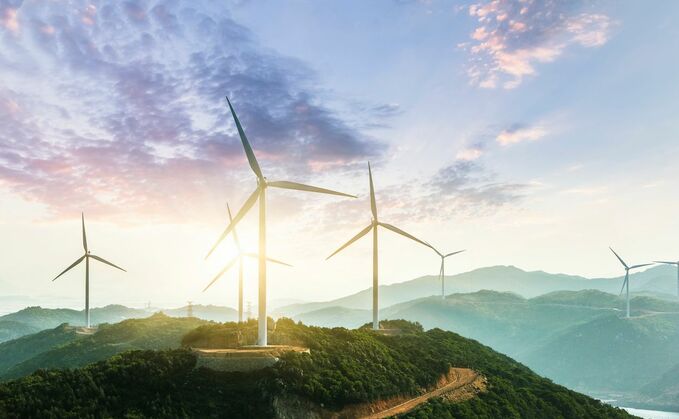
Industry Voice: Companies with ambitious plans to decarbonise can be climate leaders, no matter what their industry - and it will give them a competitive advantage, according to Schroders
The urgent need to tackle climate change has been made evident by the events of this summer. The effects of extreme heatwaves and rainfall have been demonstrated by fires and floods in locations as diverse as Turkey and Canada, or China and Germany.
The UN's Intergovernmental Panel on Climate Change (IPCC) warned in August that such extreme weather events will become a more regular occurrence if global warming continues. Swift action is therefore needed to reduce greenhouse gas emissions and thereby limit global temperature rises to 2C, or preferably 1.5C, compared to pre-industrial levels.
Despite numerous governments setting targets to reach net zero carbon emissions, the world is not on track to contain rising temperatures. Our latest Climate Progress Dashboard shows some recent progress, but points to a long-term temperature rise of 3.4C. Much more needs to be done, and fast.
What does this mean for investors?
Given the growing urgency, investors increasingly want to ensure that their assets are invested in strategies consistent with achieving rapid decarbonisation. The Schroders Institutional Investor Survey for 2021 found that climate risk was a primary factor influencing investment for 21 per cent of institutional investors, compared to just eight per cent in 2020.
Investing in decarbonisation could mean selecting only those companies who are directly enabling the energy transition through their products, such as wind turbine or solar panel manufacturers. However, there is a growing recognition that every industry, across the global market, needs to play its part in reducing greenhouse gas emissions.
Companies who are low emitters, as measured by their scope 1 and scope 2 emissions, are already starting to receive a share price premium over their higher emitting sector peers, as the chart below shows. Scope 1 emissions are those caused directly by a company via its activities while scope 2 includes the energy the company uses.
But companies are becoming more ambitious. As more companies commit to net zero, they are increasingly expanding their targets to include scope 3 emissions - the indirect emissions that occur in the value chain from suppliers or from the use of sold products.
The inclusion of indirect emissions in company targets means companies must work with suppliers who are on the same path in order to achieve their targets, and this is beginning to create a virtuous circle of business partnerships.
We are seeing more and more examples of this in practice. One of the companies we follow closely, Japanese electronic component supplier Murata, recently explained to investors that ‘as Murata is included as Scope 3 from our customers' emission viewpoint, customers always confirm Murata's initiatives to reduce GHG emissions when selecting component suppliers, and there is a clear risk of losing the business if we fail to present satisfactory actions to reduce greenhouse gas emissions'.
This is just one recent example of the new element creeping into business relationships, and we believe it is now clear that having climate leadership will change from being a cost to being a competitive advantage.
Investors in these companies could therefore benefit from stronger investment returns, while also ensuring their capital is invested in companies that are contributing to decarbonisation efforts.
Companies taking the lead on this front could become lower risk investments than companies who lag behind. By decarbonising their businesses - including their supply chains - ahead of competitors, climate leaders minimise their risk in a scenario of more aggressive government and societal action to regulate, tax and price greenhouse gas emissions.
How to identify a climate leader
A company can be a climate leader even if its activities are not directly related to the energy transition.
We define a climate leader as a company with ambitious plans to decarbonise. These plans need to be consistent with achieving a 1.5C, or better, scenario of global warming under the Paris Agreement on climate change.
How do we find these companies? Firstly, we screen the universe of global stocks for companies who have an emissions reduction target consistent with an 80 per cent reduction in emissions intensity by 2030. Emission intensity is the volume of emissions per unit of output.
We then cross-reference the data provided by the companies themselves with other sources, including the Science-Based Targets initiative and UN Race to Zero. Both of these help establish best practice for businesses seeking to set emissions reduction targets that are grounded in science.
We also consider companies to be climate leaders if their emissions reduction target is less than 80 per cent but, crucially, they are aiming for an emissions intensity of 80 per cent less than the regional sector average. In short, these are companies who are clearly leading their peer group, even if their overall target falls short of an 80 per cent reduction. This is so that we do not penalise companies that have already achieved climate leadership, and therefore will naturally find it more difficult to make incremental emission reductions.
We also recognise that there my be some 'outlier' companies who may not have such stringent targets but which nonetheless is an ambitious and clear climate leader in the context of their industry.
Climate leadership in practice: Microsoft
Ambitious targets on their own are not enough; companies need to set out detailed plans for how they intend to achieve those targets. And targets need to move. Once a target has been achieved, it's time to set a new, more ambitious one. We also need to monitor carefully that companies are on track to achieve their targets, as the hard work is in the change implementation, not the target setting.
One example of a climate leader is Microsoft. It has set ambitious targets which are designed to mobilise every part of the business and has committed to regularly assessing progress.
For example, Microsoft is targeting using 100 per cent renewable energy by 2025. It has also committed to be water positive (i.e. to more than replenish the water used by the company) by 2030, as well as being certified zero waste by 2030, and achieve net zero deforesting from all new construction.
Microsoft has also committed to be carbon neutral by 2030 and by 2050 it will erase the entire carbon footprint created since the company's inception in 1975.
How will they do all this? One tool is the creation of an internal carbon tax that each Microsoft division has to pay based on the amount of carbon it emits. That already covers scope 1 and 2 emissions but from this year scope 3 will be included too. The tax incentivises each division to pay attention to its emissions and seek to reduce them.
Reducing emissions is one thing; removing historic emissions is quite another. Much of the technology needed to do this is at a nascent stage at best. Microsoft is therefore investing $1bn in a climate innovation fund to accelerate the global development of carbon reduction, capture, and removal technologies.
Importantly, the company is publicly tracking its progress via an annual Environmental Sustainability Report.
Microsoft is already on a path towards net zero. Many other companies are at much earlier stages of their decarbonisation journey.
We see a clear opportunity emerging for investors in those companies who are taking seriously their responsibility to decarbonise. As society and policymakers pivot towards penalising inactivity and rewarding the companies that support tackling climate change, these investments can create value.
This article is sponsored by Schroders.








